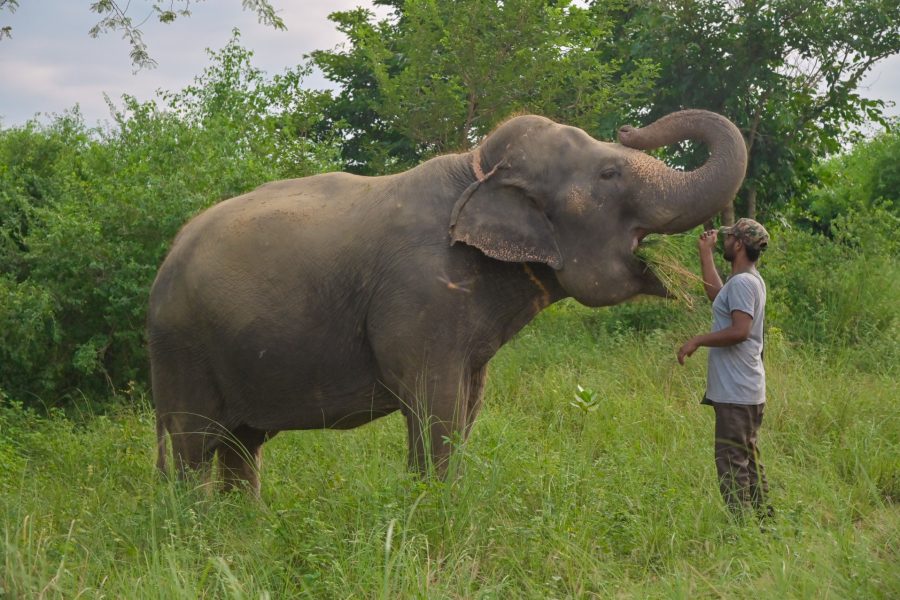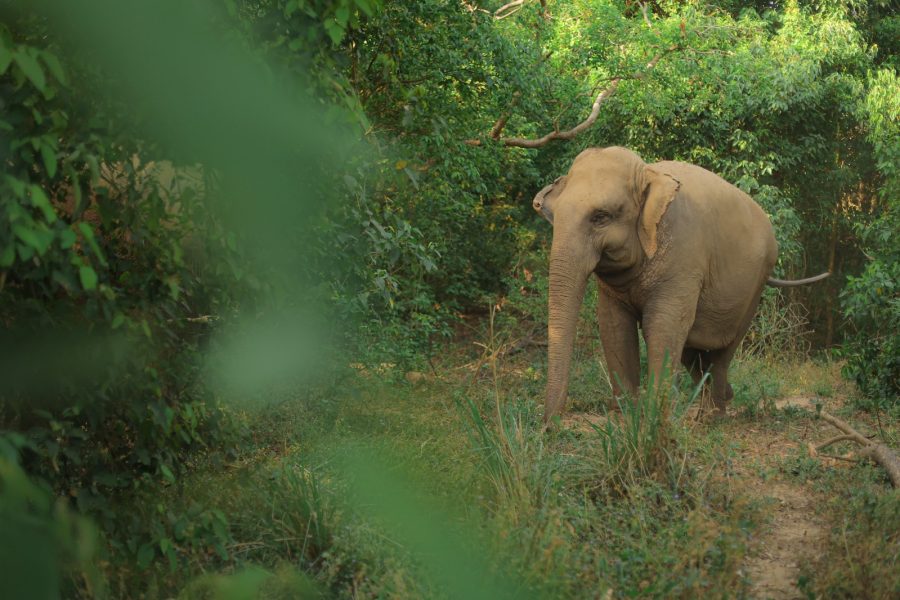Before the late 1980s, elephants had all but disappeared from the state of Chhattisgarh. There were large swathes of forests in the neighbouring southern Jharkhand and northern Odisha, which acted as a safe haven for the elephants. As such, migration to the state of Chhattisgarh was rarely recorded. However, the elephants were merely living over a ticking time bomb as their safe haven was abundant with mineral ores. It was just a matter of time before these pristine forests would fall prey to the rising demand for minerals of the growing country.
Illegal mining, habitat encroachment and felling of trees became an all too common sight in these once lush forests. Destruction came to be synonymous with prosperity. As the disturbance in the forests became too much, the wild elephants were forced to migrate out of the forests in Jharkhand and Odisha in search of undisturbed forest pockets that could sustain them. Herds of elephants undertook long journeys, from one forest patch to another, finally seeking exile in Chhattisgarh.

Post-2000 there has been a gradual increase in the influx of elephants coming to Chhattisgarh in search of shelter, creating the mammoth problem of Human-Elephant Conflict (HEC). This is evident from the increase in the number of HEC incidents reported in newspapers. The intolerance amongst the people has also grown over the years, particularly in the villages that lie in close proximity to the fragmented forests. The means of livelihood in these villages is mainly agriculture. The elephants regularly access these farms for the easily available calorie rich paddy. As such, crop raiding is now at the heart of HEC in Chhattisgarh. Ill-informed and unaware villagers have often come into direct conflict with the elephants, where the end result has been fatal. It is, thus, unsurprising that the elephants soon transitioned from being seen as avatars of God to being seen as a nuisance. The Forest Department, like the villagers, was unprepared for the long-term challenge ahead, and found themselves in a tough spot.
In the year of 2007, one such territory that the elephants came to occupy was the large forest patch in Balodabazar. The tribal communities residing in this forest division had a higher tolerance of the elephants and as such HEC did not gain much limelight. Things changed dramatically when the herd moved from Balodabazar to Mahasamund in 2016, where the forests were much more fragmented. The herd raided the fields and created upset within the community. Despite timely compensation being paid to the affected farmers for their loss, the community remained dissatisfied. Demands such as the translocation of elephants to captivity, and increase in compensation, cropped up as HEC became a politicised issue. Thus, at the beginning of the year 2017, Wildlife SOS was invited by the Forest Department to develop a better understanding of the conflict in Mahasamund and develop a long-term strategy that would mitigate HEC.
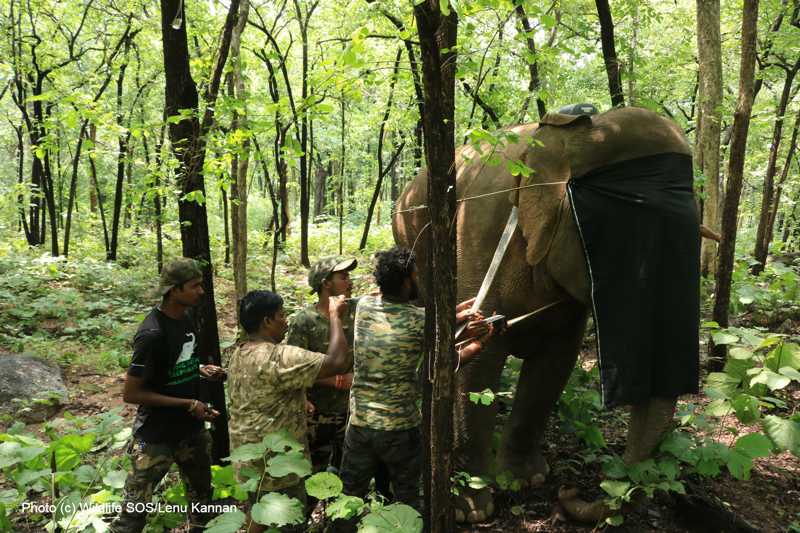
The overarching goal of the project is to develop an Early Warning System (EWS) to make Mahasamund safe and conducive for both the elephants and humans. There are two major exercises to the project: first, tracking the elephants’ location and second, generating awareness amongst the villagers about HEC and ways to avoid it. The two components work in complement with each other to develop an effective, functional EWS.
In September 2018 the Wildlife SOS team successfully radio-collared the matriarch of the herd at Mahasamund, which enables the forest department and the field teams to get an accurate location of the herd. The team also plans to radio collar the two tuskers who usually operate independently and have been observed to enter farmlands as well. Readings from the GPS tracker and updates from the field trackers are used to map out the proximity of the herd to the villages. As soon as it is observed that the elephant is close-by, the people are quickly alerted via means of bulk SMS, local radio announcements, and by forest officials. In the month of May, the team has been able to alert the villages over 17 times. Despite the many hurdles that the team faces when they attempt to safely radio-collar an elephant, it is the easier part of the challenge at Mahasamund. The apprehension of the local communities towards mitigation of HEC still remains a difficult obstacle.
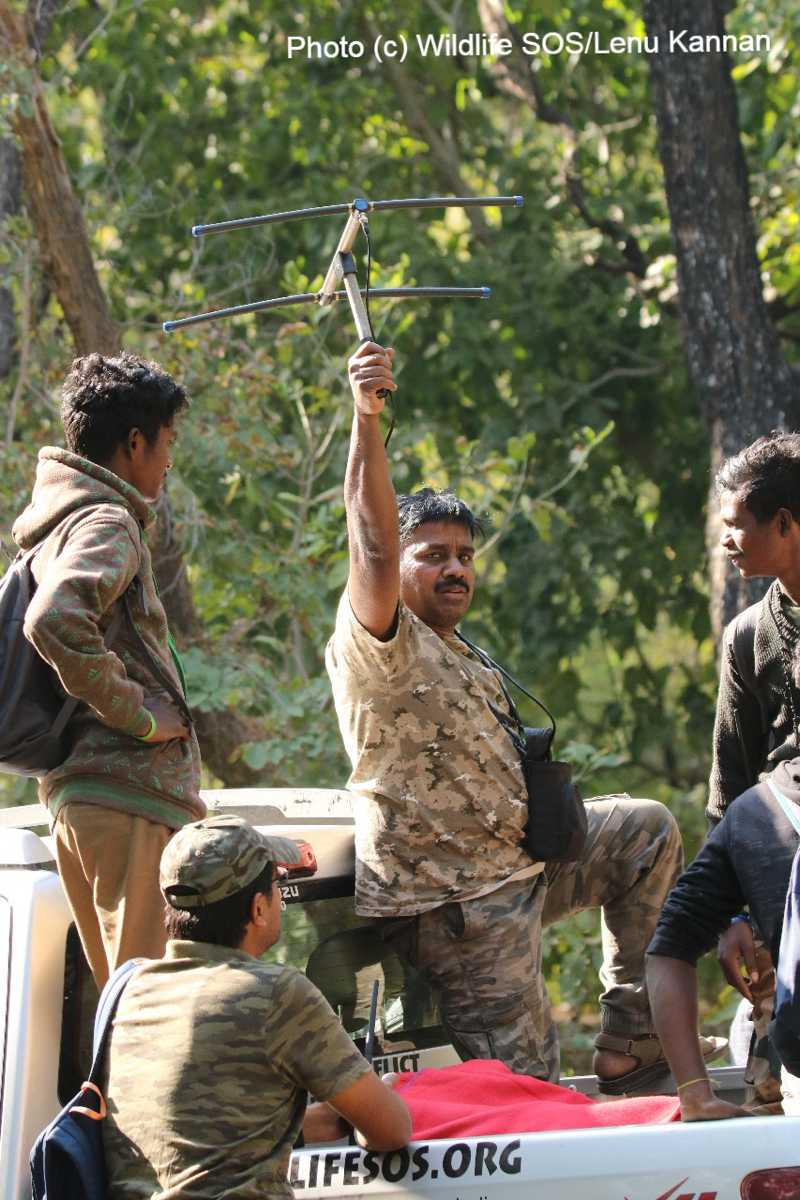
The perception of the people regarding these elephants was largely negative and they were treated as a nuisance that needed to be eradicated. After conducting several informal sessions with the surrounding villages in Mahasamund, it was noted that this negative perception was rooted in the lack of awareness about elephants as a species. Negative attitudes were further aggravated by the lack of knowledge about avoidance behaviour that needs to be practised, precautions that need to be taken when trekking through the forest, and how to divert route of elephants from entering the village. A few villagers looking for a solution formed a committee, Haathi Bhagao, Fasal Bachao, to chase elephants away when they entered the field. This committee lacked training in how to avoid conflict situations and was largely ineffective on the ground. However, it was evident that gaining the trust of the community was critically important to mitigate this fragile situation.
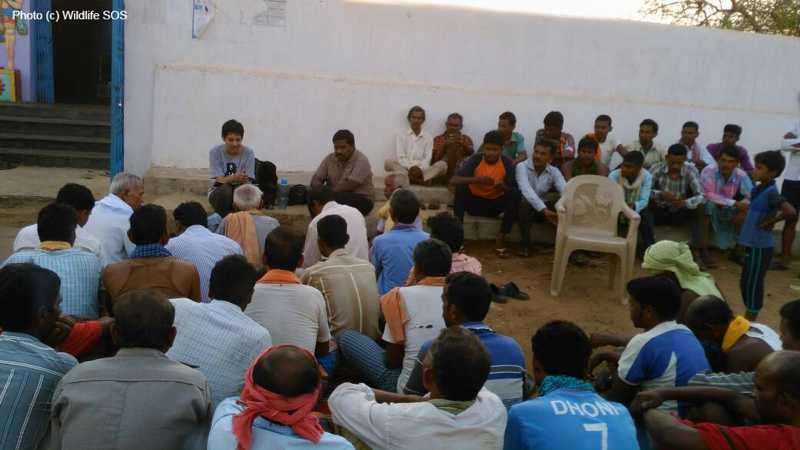
Wildlife SOS deployed two officials to assist the Forest Department in gaining the essential community engagement. The team conducts regular workshops with the villagers during panchayat sessions where they are given a chance to raise their issues and queries, and their expectations from the project. These sessions also educate the villagers about why conflict occurs, elephant behaviour, essential conflict mitigation strategies and the importance of EWS. In fact, through these sessions, 94 people across 8 villages have signed up as volunteers to be trained for Haathi Mitra Dal. These volunteers actively help in alerting the villages when the elephants are nearby, thereby making communication during the time of distress more efficient and reliable. Furthermore, these volunteers also act as the first line of defence to ward off approaching elephants by using methods such as chilli smoke from safe distances. In the last month, volunteer groups from three villages, namely Parasidh, Lehengar and Gurudih have been given intensive training that further enables them to assist the forest department with on-foot tracking of elephants and give timely updates. The team hopes to expand the programme to the other surrounding 19 high conflict villages, as well to equip the villagers with the skill to deal with conflict without causing harm to the animals or jeopardising their own lives.
The rising conflict in Chhattisgarh is neither the exiled elephants’ fault nor that of the unprepared communities. As the elephant corridors and habitats are destroyed, living with conflict has to become the norm for the people. By working closely with the community, important steps towards peaceful co-existence can be taken, which are much-needed as wildlife comes under immense pressure caused by humans.
We would like to thank the Tennessee Elephant Sanctuary for their support with this project!
References:
Baskaran, N., Varma, S., Sar, C., & Sukumar, R. (2011). Current Status of Asian Elephants in India. Gajah, 35, 47-54.
Singh, R. K. (2002). Elephants in Exile. A Rapid Assesment of the Human-Elephant Conflict in Chhattisgarh. Wildlife Trust of India, New Delhi.

